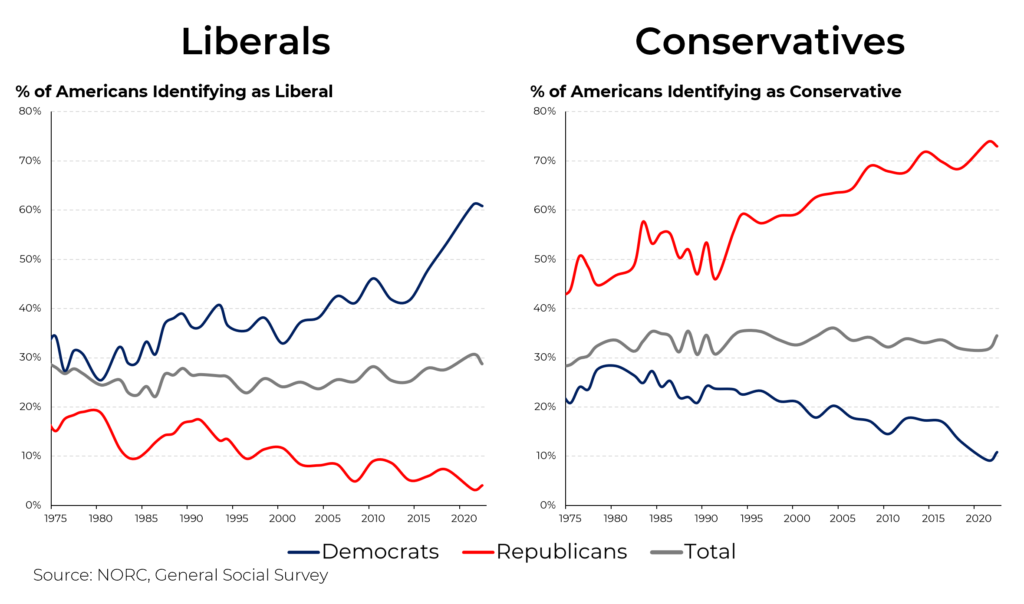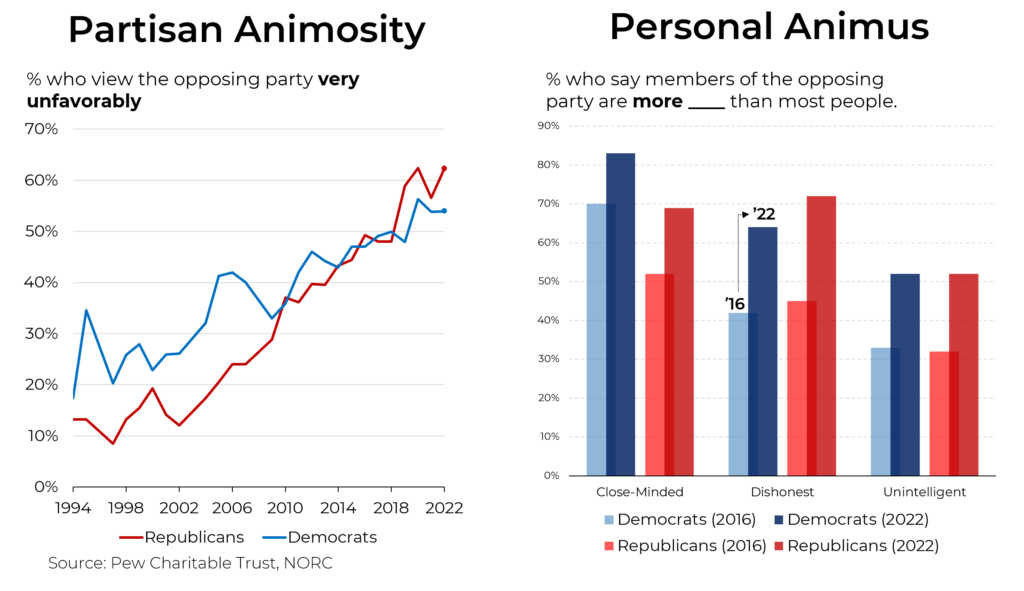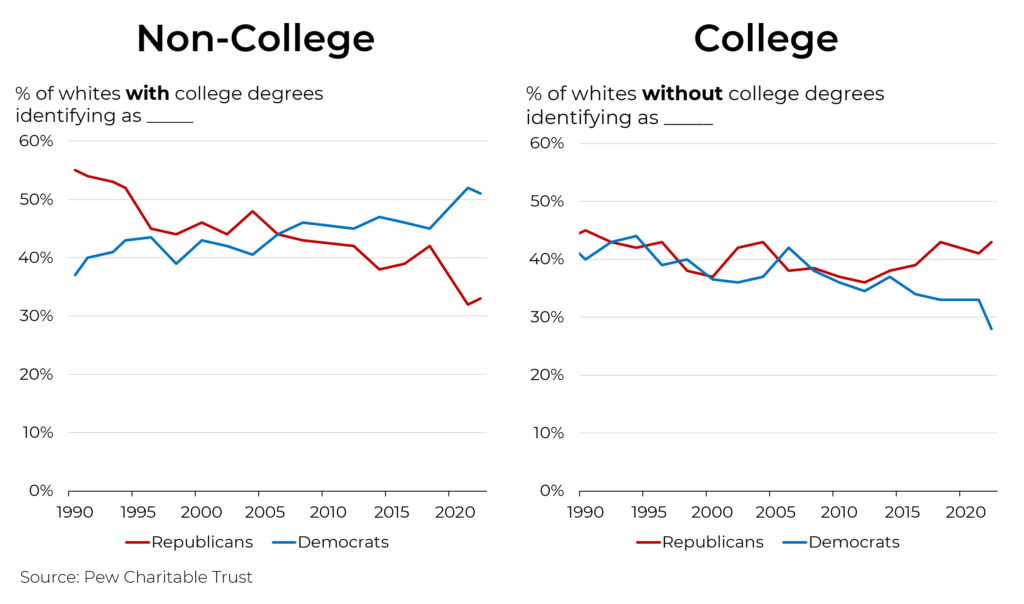Why have Republicans stuck so closely to Donald Trump, his four indictments and other failings notwithstanding? One theory, advanced in a recent Wall Street Journal article, is that our politics have become more tribal, more partisan, and far angrier. The data provides support for this notion.
For starters, over the past five decades, Americans have realigned themselves so that those who self-identify as liberals have become far more likely to be Democrats, while those who consider themselves conservatives have increasingly become Republicans. Back in the 1970s, less than half of Republicans viewed themselves as conservatives; today that share has risen to 73%. Meanwhile, the portion of Republicans who are liberals has declined from 18% to just 4%. Democrats have followed a similar pattern; in 1974, nearly a quarter of Democrats considered themselves conservatives; today only 11% do. But Democrats who are liberals has risen from 32% in 1974 (and 25% in 1980, when liberalism was at a nadir) to 61% now.
Interestingly, the overall share of Americans who consider themselves liberals and conservatives has barely changed over those nearly 50 years.
Meanwhile, another major shift has occurred: Voters have increasingly grouped themselves between the two parties based on their level of education. Whites with college degrees have moved into the Democratic camp while whose without college degrees are more often Republicans. Note that this phenomenon, which is often associated with the rise of Trump, has actually been underway for more than 30 years (although Trump’s brand of populism gave it a push). In numerical terms, in 1990, 55% of college-educated whites self-identified as Republicans; just a third do today. But the 37% of whites with college degrees who were Democrats in 1990 has risen to 51%.
As for non-college-educated whites, after being roughly evenly divided between the two parties for 25 years, they have shifted in growing numbers to the Republican party; 43% are Republicans while just 28% are Democrats. (Note that self-identified independents have become a growing proportion of the electorate.)
The greater ideological and educational homogeneity of the parties has contributed to a significant increase in negative feelings that each side has for the other. In 1994, only 13% of Republicans viewed Democrats unfavorably; today 62% do. The equal and opposite reaction has occurred among Democrats. in 1974, 17% viewed Republicans unfavorably; now 53% do.
Other metrics of civility – or lack of it – have followed a similar trend. More members of both parties view the other as close-minded, dishonest, and unintelligent (as well as immoral and lazy).





